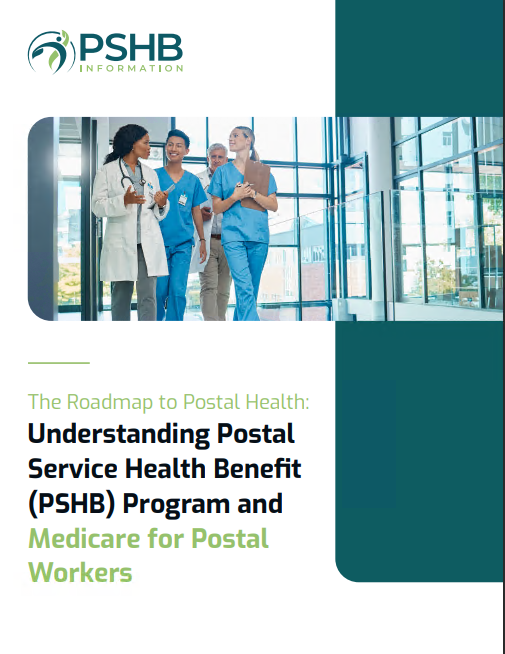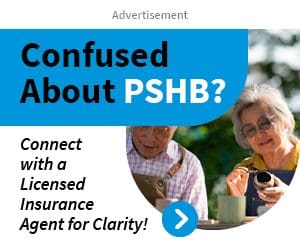Key Takeaways
- Retirees transitioning to the Postal Service Health Benefits (PSHB) program can secure continuous coverage by understanding their enrollment options and deadlines.
- Proper planning and staying informed about eligibility criteria are essential for a smooth transition without losing healthcare coverage.
How Retirees Can Make a Smooth Transition to PSHB Without Losing Coverage
As retirees shift from the Federal Employees Health Benefits (FEHB) program to the newly established Postal Service Health Benefits (PSHB) program, it’s crucial to understand the steps necessary to maintain continuous healthcare coverage. The PSHB program, slated to take over from the FEHB for postal workers and retirees, presents new options and requirements that can impact coverage continuity. Navigating this transition effectively is key to ensuring that retirees do not experience gaps in their healthcare benefits.
Understanding the PSHB Program and Its Differences
The PSHB program is designed to meet the unique needs of postal workers and retirees, distinct from the broader FEHB program that has been in place for decades. The shift to PSHB comes as part of broader postal service reforms aimed at creating a more sustainable and tailored healthcare system for those associated with the postal service.
One of the most significant changes with the PSHB program is that it will require Medicare-eligible retirees to enroll in Medicare Part B. Unlike the FEHB program, where enrolling in Medicare Part B was optional, PSHB mandates this enrollment to avoid penalties and ensure comprehensive coverage. This integration with Medicare is intended to streamline costs and provide retirees with robust healthcare options that align with their needs in retirement.
Key Steps to Ensure a Smooth Transition
Transitioning from the FEHB to the PSHB requires careful planning. Retirees should follow several key steps to ensure they maintain their healthcare coverage without interruption:
-
Review Eligibility and Enrollment Requirements: Retirees should begin by understanding their eligibility for the PSHB program. Those who are already enrolled in the FEHB program will need to transition to PSHB when it becomes available. Additionally, retirees must ensure they meet the enrollment requirements, particularly the need to enroll in Medicare Part B if they are eligible.
-
Understand the Enrollment Period: The PSHB program will have a specific enrollment period, during which retirees must sign up for coverage. Missing this window could result in lapses in coverage or penalties, especially concerning Medicare Part B. Retirees should mark their calendars and be ready to act once the enrollment period begins.
-
Compare PSHB Plans: Similar to the FEHB program, the PSHB will offer multiple plan options. Retirees should compare these plans carefully, considering factors such as premiums, coverage options, and provider networks. It’s essential to choose a plan that aligns with one’s healthcare needs and financial situation.
-
Coordinate Medicare Enrollment: For those eligible for Medicare, it’s vital to ensure that their Medicare Part B enrollment is in place before transitioning to PSHB. This coordination will help avoid any coverage gaps and ensure that retirees benefit from the integration between PSHB and Medicare.
What Happens if You Miss the Enrollment Deadline?
Missing the PSHB enrollment deadline can have significant consequences for retirees, particularly those who are Medicare-eligible. Without timely enrollment in PSHB and Medicare Part B, retirees may face penalties and experience a gap in healthcare coverage. This gap can be particularly concerning for those with ongoing medical needs or who require regular prescriptions.
To avoid this, retirees should take proactive steps:
- Set Reminders: Use personal calendars, digital reminders, or enlist the help of a trusted family member or friend to ensure that you do not miss the enrollment deadline.
- Seek Professional Guidance: If you’re unsure about the transition process or the steps involved, consider reaching out to a licensed insurance agent or a retiree benefits counselor who can guide you through the process.
- Double-Check Medicare Enrollment: Verify that your Medicare Part B enrollment is active and aligned with the start date of your PSHB coverage.
Navigating Potential Challenges in the Transition
The transition to the PSHB program might present challenges, especially for retirees who are unfamiliar with the new requirements. One potential issue is the mandatory Medicare Part B enrollment for eligible retirees, which could come as a surprise to those who previously opted out during their FEHB coverage. This change may require additional financial planning to accommodate Medicare Part B premiums.
Additionally, retirees who have moved or are living in areas with limited access to healthcare providers within the PSHB network may face difficulties in accessing care. To mitigate this, retirees should:
- Research Provider Networks: Before selecting a PSHB plan, check the availability of providers in your area to ensure that you can continue receiving care without disruption.
- Understand Out-of-Pocket Costs: Familiarize yourself with the cost-sharing structure of your selected PSHB plan, including deductibles, copayments, and out-of-pocket maximums. This will help you budget for healthcare expenses effectively.
Ensuring Continuity of Care
Maintaining continuity of care during the transition to the PSHB program is essential for retirees with ongoing health conditions or those who require specialized care. Here are some strategies to ensure that your healthcare needs are met without interruption:
-
Consult with Your Current Providers: Speak with your current healthcare providers to understand how the transition to PSHB might affect your care. Confirm whether your providers are included in the PSHB network or if you’ll need to find new providers.
-
Keep a Record of Medications and Treatments: Document all ongoing medications, treatments, and care plans before transitioning. This will help your new providers, if necessary, continue your care seamlessly.
-
Use Transitional Services: Some PSHB plans may offer transitional care services, such as helping you find new providers or ensuring that your medications are covered during the switch. Explore these options to minimize any disruption to your care.
FAQs: Common Concerns About the PSHB Transition
Will I lose coverage if I do not enroll in Medicare Part B?
Yes, if you are eligible for Medicare and do not enroll in Part B, you may lose coverage under the PSHB program. The integration of PSHB with Medicare Part B is a key component of the new system, and failing to enroll could result in significant coverage gaps.
What should I do if my current providers are not in the PSHB network?
If your current providers are not in the PSHB network, you will need to find new providers who are covered under your selected PSHB plan. Start this process early to ensure that your care is not interrupted.
How can I budget for the transition to PSHB?
Budgeting for the transition involves understanding the costs associated with your PSHB plan, including premiums, deductibles, and copayments, as well as the Medicare Part B premium. Create a comprehensive budget that accounts for these expenses to avoid financial strain.
Final Thoughts on a Smooth Transition to PSHB
As retirees prepare to transition to the PSHB program, the most critical factor is to stay informed and proactive. Understanding the new requirements, especially the need for Medicare Part B enrollment, and planning accordingly will help ensure that retirees maintain uninterrupted healthcare coverage. By carefully reviewing their options, meeting deadlines, and seeking professional guidance when needed, retirees can navigate the shift to PSHB smoothly, protecting their health and financial well-being.
Contact Information:
Email: [email protected]
Phone: 6155552345






